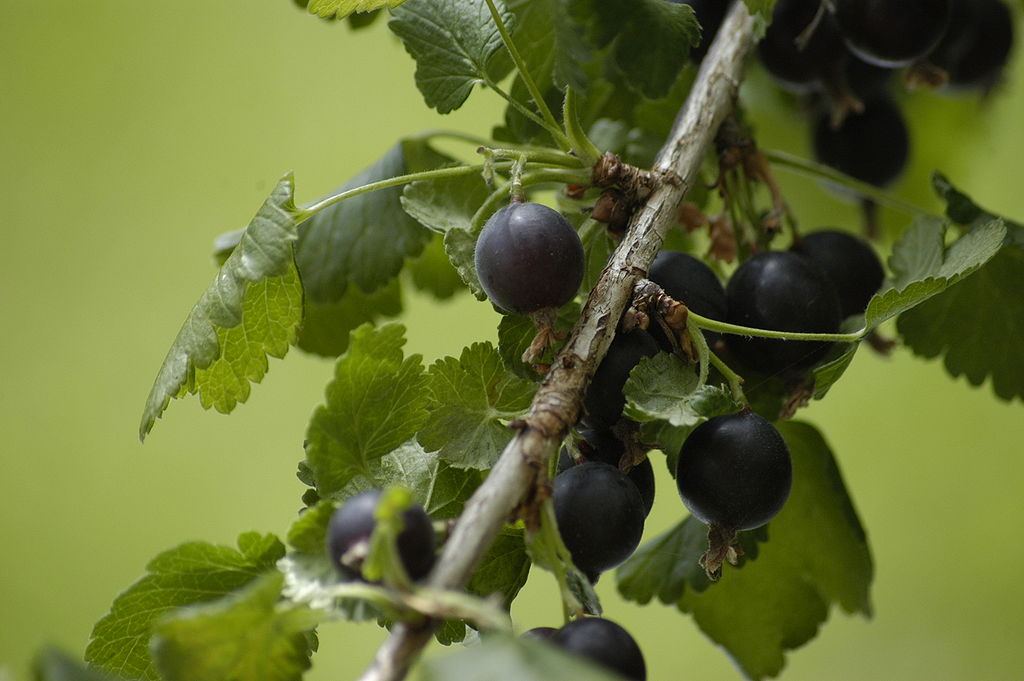Jostaberry (Ribes x nidigrolaria)
As you might guess from its name, this relatively unknown member of the gooseberry family is a cross between a black currant and a gooseberry. This newcomer wasn't planned: fruit breeders were trying to create plants with the greatest possible immunity to diseases and pests through crossbreeding, and thus the jostaberry, also called the yokeberry, emerged as a happy "accidental product."

Cultivation – How does it work?
For jostaberries, autumn planting from October to November is best. To do this, shorten the shoots to approximately five buds per shoot. It's also important to loosen the soil as deeply as possible to make it easier for the plants to establish themselves. Row planting is a good option for jostaberries, but you should still allow for a space of 1.50 by 2 meters and allow for the plants to grow to a height of 1.50 to 2 meters.
Location – Where is best?
Choose a sunny to partially shaded spot to grow your jostaberries. Jostaberries prefer nutrient-rich, permeable soil, preferably one enriched with humus. Make sure it's always sufficiently moist and calcareous.
Care – What needs to be done?
In March and after harvest, approximately five-year-old shoots should be regularly cut back to the ground. Pay attention to the color of the shoots: older ones can be identified by the darker color of their bark. Maintain approximately five shoots per year, plus six to ten shoots between one and four years old. Be sure to thin out regularly to encourage internal growth. Avoid hoeing, as this will do the shallow-rooted jostaberries a disservice. Instead, regular mulching and an annual addition of sufficient compost in the spring are recommended.
Harvest – What should you consider?
The jostaberry harvest time is – depending on the variety – from June to July. The right time can be recognized by the change of color from an initially light green robe, to an unripe red robe, to a mature dark purple, almost black. The fruits should be picked individually, as ripening times vary greatly and harvesting can therefore take several weeks. Picking them can sometimes be a little difficult, as the berries are unfortunately often not easy to separate from the bush. This is also the reason why jostaberries are still not cultivated commercially and are rarely found in stores. For hobby gardeners, it is therefore recommended to pick them with a small piece of the stem and only remove this together with the brown "bunch" before use.
Those in a hurry to try their jostaberries can eat them fresh as a snack. For those with more patience, there are many ways to process them: for example, into jelly, jam, juice, red fruit compote, or cake topping.
Botany – What kind of plant is this?
The considerably more vigorous jostaberry impresses with its higher yields and thornlessness compared to its parent varieties, making it a particularly pleasant garden companion. Furthermore, the jostaberry is largely immune to American gooseberry mildew—feared by many hobby gardeners—and currant gall mites. Jostaberry fruits have a similar black color to currants. And the similarity to both parent varieties is undeniable in other respects: The size of the fruits is roughly halfway between currants and gooseberries. Anyone who has tasted the berries will describe them as aromatic, fruity, and slightly tart. Another major plus is their exceptionally high vitamin C content, which few other berries can match. In addition to the vitamin boost, the fruits also contain the color-giving anthocyanins, which are also very beneficial to health. The only thing that currant lovers might miss about the jostaberry is the typical smell that the leaves and branches of the black currant give off, since the jostaberry lacks oil glands.
Like most other berries, the jostaberry is largely self-fertile, but the yield increases noticeably if you plant at least two varieties.
Cultural history – How did the jostaberry come to us?
The resistant jostaberry has been around for about 30 years. It originated in Dresden in 1983 through a cross between the black currant and the gooseberry.
Varieties – Which are recommended?
The most popular varieties include:
- Josta: early flowering, almost black, mildly sour fruits at the end of June
- Jocheline: At the end of June, purple-black fruits with a pronounced currant aroma
- Jostine: Medium-sized, dark red/black fruits in early July, strong-growing, robust, healthy
- Jogranda: Robust and healthy at the beginning of July
- Jonova: Large, wine-red/dark red fruits in early July, not quite as vigorous
- Rikö: Medium-sized, dark, very aromatic fruits, strong-growing, robust
TEXT: Carina Naeve












